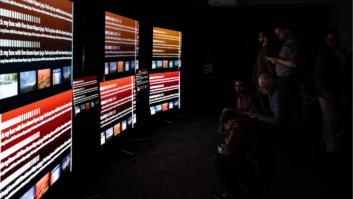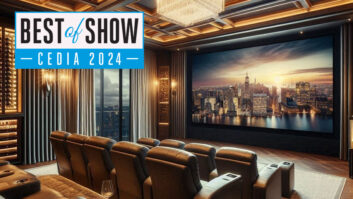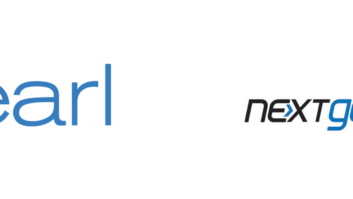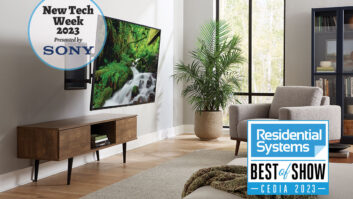It’s hard to believe, but 4K UHD televisions have been enhancing the entertainment experience of viewers for just over a decade. In that time, they’ve made higher resolution and better audio quality table stakes for big screen flat panels. More recently, 4K televisions have upped their game with newer models delivering support for features like high dynamic range (HDR) and high frame rate (HFR) as well as wide color gamut (WCG) and object-based immersive audio.
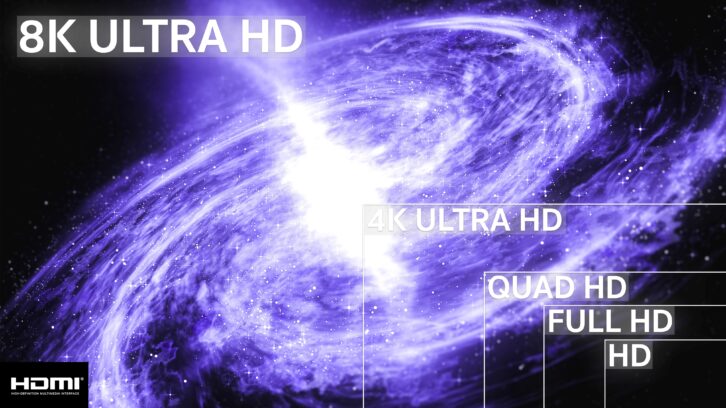
While remarkable, these televisions are beginning to cede their position at the pinnacle of the television pyramid to 8K UHD televisions, which take the state-of-the-art in UHD television far beyond the capabilities of 4K.
First available to consumers in 2019, 8K televisions have seen slow but steady uptake with worldwide unit growth climbing from 100,000 8K televisions that year to 1.3 million last year and a forecasted 2.1 million in 2023. By 2026, annual worldwide shipments are expected to hit nearly 4.5 million, according to a forecast by researcher Statista.
Why 8K?
It’s easy to understand the building momentum given the remarkable capabilities of 8K TVs.
When it comes to pixel count, 8K televisions offer four times the resolution of 4K displays and 16 times that of full HDTV. That’s 7,680 x 4,320 pixels compared to 3,840 x 2,160 pixels for 4K and 1,920 x 1,080 pixels for full HD. In the aggregate, that’s 33,177,600 (8K) vs. 8,294,400 (4K) vs. 2,073,600 (HD) pixels.
Another key factor contributing is affordability. For example, some 65-inch 8K displays are now available for under $2,000—essentially the same price of some a top-notch 65-inch 4K televisions in 2020.
However, pixel count and price are only two parts of a larger story. Other factors contribute to making 8K television the best-in-class alternative for those seeking the highest-level television experience available today.
With larger display sizes and wider viewing angles, 8K televisions produce an immersive entertainment experience—especially for those sitting close to the screen.
8K Content
If there’s one knock on 8K, it’s that at the moment little content originates in 8K. However, thanks to advanced circuitry and AI, upscaling the abundance of 4K and HD content that’s available today produces remarkable 8K imagery—video that takes full advantage of each of 8K’s 33 million pixels.
Plus, as the catalog of native 8K content grows, viewers with 8K televisions will be ready to enjoy its full visual majesty without delay.
To accelerate 8K content production, the 8K Association this year launched an initiative to raise the awareness among producers and other content creators about ongoing 8K content initiatives.
Enhancing video quality further, 8K televisions support HDR, which ensures details in dark portions of a scene are visible—not lost in a muddy blur—and that the brightest portions of the scene remain clear and detailed—in other words, without bloom.
Dolby Vision, HDR 10 and HDR 10+ are among the HDR formats supported.
HDR also brings the widest available color space to 8K, meaning that when 8K content supporting the latest color space standard becomes available, 8K TVs will be able to reproduce far more colors than today.
Immersive sound is another important benefit. Many models feature Dolby Atmos and other high bitrate object-oriented audio formats to recreate the sound experience moviegoers expect in theaters.
8K Connectivity
With 33 million pixels, HDR, HFR and immersive audio, 8K televisions are data hungry. Moving all that data between 8K system components demands connectivity up to the task.
Fortunately, Ultra High Speed HDMI® Cables are more than up to the task. Defined as part of the HDMI 2.1a Specification, Ultra High Speed HDMI® Cables support bandwidth of up to 48Gbps.
Homeowners and home theater contractors putting 8K systems in place, however, should be certain the cables and components they purchase are from licensed HDMI Adopters. These companies are authorized to use HDMI Specifications, trademarks and logos.
Therefore, when buying HDMI Products always look for the HDMI Logo and make sure you are buying only from HDMI Adopters or authorized resellers to avoid knockoffs and guarantee top performance
While HDMI® Licensing Administrator Inc. (HDMI LA) regularly works with customs organizations in countries around the world to identify and seize counterfeit products before they reach retail shelves and regularly conducts retail audits to ensure the authenticity of products for sale, it’s always smart to look for the Ultra High Speed HDMI® Certification Label on the cable packages. A certification scanning app is in place to allow consumers to verify certification.
If viewers want the very best, 8K television is what to get. 8K TVs not only ensure homeowners are beyond future-ready, but also thanks to the AI-driven upscaling these televisions enable them to enjoy utmost viewing experience when it comes to HD and 4K content.
The terms HDMI, HDMI High-Definition Multimedia Interface, HDMI Trade Dress and the HDMI Logos are trademarks or registered trademarks of HDMI Licensing Administrator Inc.
